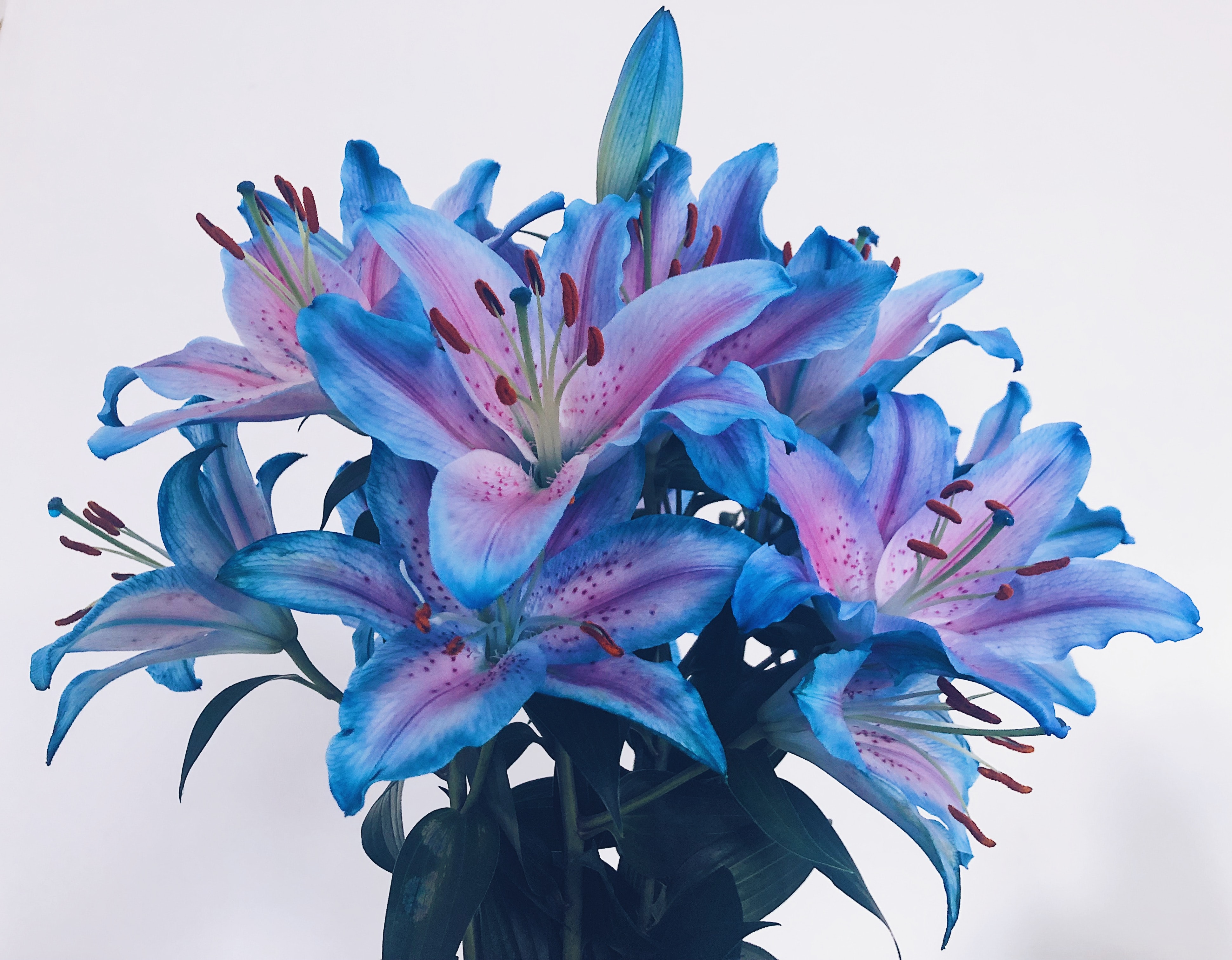The warrior lay on the ground, surrounded by breathtaking chill, perfectly preserved, entombed in beauty.— From a
Weinadi fairy tale, translated.
You need to have another conversation with your son. He's been at the lily sap again.— A note from an exasperated Garruw mother to her spouse
The Frozen Lilies of the
Garruw are one of the most beautiful and strange plants of
Thaiterra. It can be found all over the planet, but it grows in particular proliferation in the
Agarruta Drei. Without it, the refrigeration technologies of the Garruw and the Weinadi would be significantly reduced.
Since the lilies grow at the boundary between the spaces claimed by the Garruw and Weinadi, they feature in both cultures, but for different reasons (as indicated by the above quotes). The term Frozen Lilies is the human translation of the name.
Among the Weinadi
The Weinadi words for it in the area are
sazhen zaore, which roughly translates as "ice lily". The reason for the name is obvious, due to the appearance and icy traits of the flower.
Within the Weinadi, particularly the
Dheizei who roam the surface, the flowers are usually associated with boundaries, and with great risk and greater reward. The flowers grow with Amdzha crystal, which is most typically found at the bases of mountains, which are the tradition home of the Garruw, who used to eat the Weinadi. Gathering the flowers could be crucial to survival, allowing the tribes to refrigerate their food, but it was incredibly dangerous. Even now in the wake of the
Asayo-Djemndarra Accords, it's still a risky practice.
In mythology, the quest for the flowers is a repeated motif. And in art, when the flower appears, it can symbolize challenge and difficulty. For example, in classical art pieces, if someone is portrayed holding a Frozen Lily, it can be taken to mean that this person had recently undergone some great trial and emerged victorious.
Among the Garruw
The Garruw call it
terzhid eyoze, a phrase which used to literally mean "cold drug flower." This is because they valued the flower more for its medicinal qualities. They could use it as a sedative or a numbing agent, and it was used to treat fevers in small doses.
However, the main use came from when the lily sap was distilled into an intoxicant substance, typically rubbed on the skin or smelled. The substance is popular with younger Garruw, as the effects can make flying in a storm a rather spectacular experience (which is significant considering the state of most storms on Thaiterra).





I think you got some nice concept here with the plant only growing thanks to nearby crystals. The tooltips are also handy to learn a bit more about everything related to the plant. Without the tooltip I would not understand where the energy of the crystal comes from so perhaps you could add it here as an extra sentence so people don't need to look it up on a first read. I would expand the summary on the top a bit to tell more about it's properties and where it grows because in the first paragraph the reader does not yet know about the crystals. It's also possible to switch the traits and dietery sections. The first sentences in the dietery section seem a bit strange still so perhaps they need a bit of rework. You mention that the flower is also important culture wise for both the Garruw and the Weinadi. It would perhaps be interesting to see an extra section for each to see what culture they have in relation with the flower. In all a nice concept that would be even better with some additions ! :)